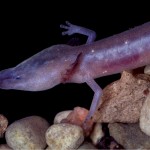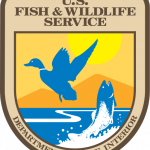Here’s Where Salamanders Will Be Protected in Central Texas
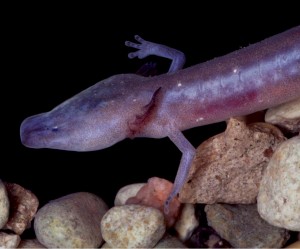
Photo courtesy of Dr. David Hillis
The Austin Blind Salamander is one of the species now listed as endangered in Central Texas.
You can welcome two Central Texas salamanders this week to the list of animals protected under the Endangered Species Act.
The Austin Blind Salamander, a creature that doesn’t have eyes in the traditional sense and lives in the dark depths of the Barton Springs Pool, has been listed by the US Fish & Wildlife Service as endangered. The Jollyville Plateau Salamander, which lives underwater in caves and springs fed by the Edwards Aquifer in Travis and Williamson Counties, has been listed as “threatened.” Both listings were expected, a result of the settlement in 2011 of a lawsuit by environmental groups against the Fish & Wildlife Service.
“These are some of the most endangered salamanders in the world,” says Chris Herrington with the City of Austin’s Watershed Protection Department. His group has been working with the Fish and Wildlife service to keep the pool open and the salamanders protected. Herrington notes that the Austin Blind Salamander is only found in and around Barton Springs Pool, an Austin landmark. In their counts of the creatures at the pool, his group has never found more than a thousand of the salamanders.
In order to keep that pool open to swimmers, the city has to keep a Habitat Conservation Plan with the service that protects both the Austin Blind Salamander and the Barton Springs Salamander, which was already on the endangered species list.
Listing the salamanders protects them from activities that could harm them, like construction. The Fish & Wildlife Service issues permits and collaborates on Habitat Conservation Plans to maintain the salamanders habitat with clean, steadily flowing water.
The US Fish and Wildlife Service says that salamanders in Central Texas have been put at risk by “increasing urbanization and human population growth,” and that it’s important to protect the salamanders for two reasons: First, the species are only found in Central Texas and nowhere else in the world. And secondly, the act as a kind of “canary in the coal mine” when it comes to clean, stable supplies of water.
“These salamanders are in many ways indicators of clean water,” says Zerrenner, “they need high water quality and continuous flows that provide them habitat.” Drought has also played a role in the degradation of their habitat, the service says.
So where are the critical habitats in the area? The service has put together these two maps. First, the Jollyville Plateau’s protected habitat in Travis and Williamson County:
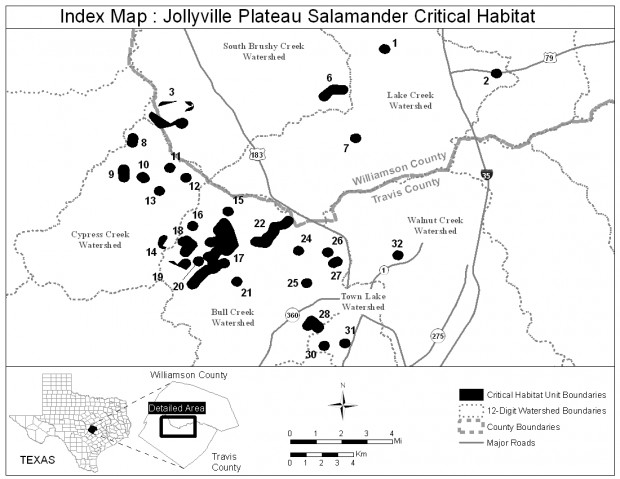
Map by US Fish & Wildlife Service
The critical habitat for the Jollyville Plateau salamander.
And the Austin Blind Salamander in Barton Springs, will, not surprisingly, be protected in that area:
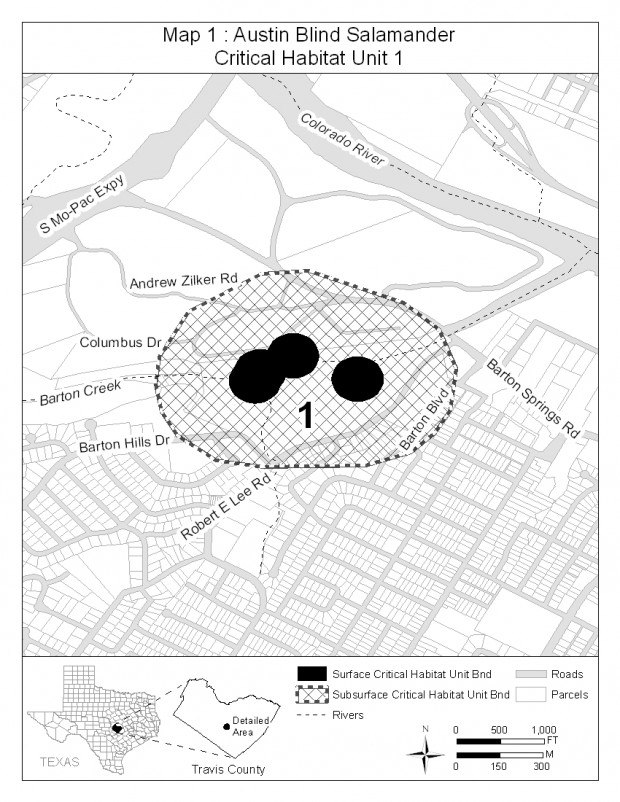
Map by US Fish & Wildllife
The Austin Blind Salamander critical habitat around Barton Springs Pool in Austin.
Two other salamanders that were also up for the endangered list, the Georgetown and Salado salamanders, will be studied for another six months. That should appeal to some officials in neighboring Williamson County, who have argued that listing them could hurt development.
